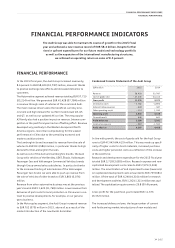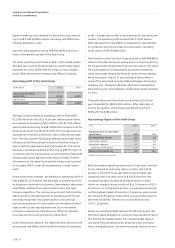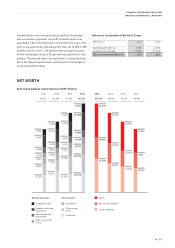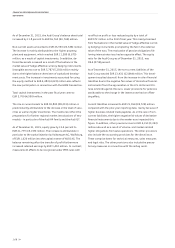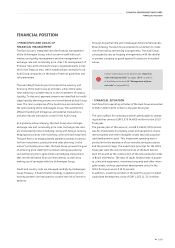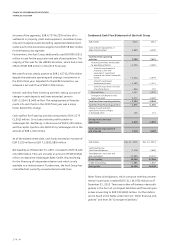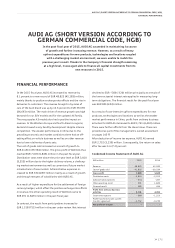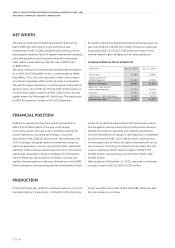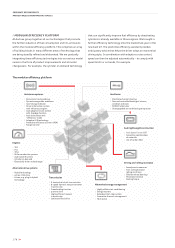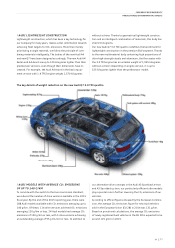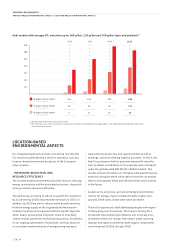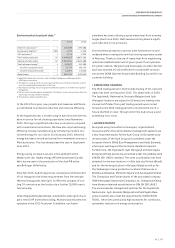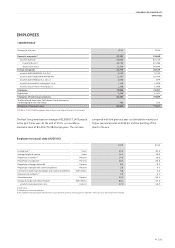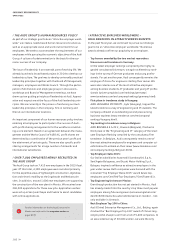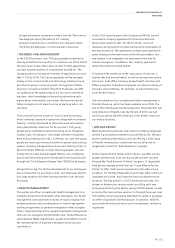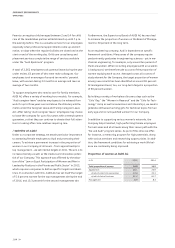Audi 2015 Annual Report Download - page 175
Download and view the complete annual report
Please find page 175 of the 2015 Audi annual report below. You can navigate through the pages in the report by either clicking on the pages listed below, or by using the keyword search tool below to find specific information within the annual report.
CORPORATE RESPONSIBILITY
PRODUCT-BASED ENVIRONMENTAL ASPECTS
>> 175
We are also conducting research into the synthetic production of
Audi “e-benzin” in partnership with a French company. In 2015,
we successfully obtained purely synthetic Audi “e-benzin”
without the use of mineral oil. Audi “e-benzin” allows higher
engine compression ratios and therefore greater fuel efficiency.
Furthermore, we have teamed up with a U.S. partner to pro-
duce the synthetic fuels Audi e-diesel and Audi e-ethanol with
the help of microorganisms.
Further information on Audi e-fuels can be found in
the magazine section on pages 92 ff.
/LIFE-CYCLE ASSESSMENTS
As part of our quest for a holistic assessment of environmental
impact, we also look at the entire value chain of our products
and processes besides reducing the fuel consumption and CO2
emissions of our vehicles. We have set ourselves the goal of
reducing the environmental impact of every new model com-
pared with its predecessor. In order to gauge this accurately,
we intend to draw up a detailed life-cycle assessment for every
vehicle line. We identify the environmental impact of every
vehicle over its entire life cycle – starting with development,
through the operating phase to recycling.
We have already disclosed the life-cycle assessments for the
Audi TT Coupé as well as the Audi A4, Audi A6, Audi Q7, Audi R8
and the Audi e-gas projects.
Further information on the life-cycle assessments can
be found at www.audi.com/cr.
/AUDI TRON TECHNOLOGIES
With new drive technologies, sustainable energy sources and
mature concepts, we aim to deliver carbon-neutral mobility
without expecting our customers to settle for any compromises.
Audi tron technologies already demonstrate our expertise in
developing alternative drive concepts.
For instance, we brought the new Audi A3 Sportback g-tron
onto the German market at the start of 2014. The five-door
premium compact car can run on any of a choice of natural gas,
conventional fuel or climate-friendly Audi e-gas.
The year under review saw us unveil our second model that
can run on natural gas or climate-friendly Audi e-gas, the
Audi A4 Avant g-tron. The new g-tron model again allows
drivers to use the Audi e-gas fuel card initially introduced for
the Audi A3 Sportback g-tron, to enjoy the benefits of almost
entirely carbon-neutral mobility.
Our Audi A3 Sportback e-tron has been available since the end
of 2014 and combines the best of two drive principles with its
plug-in hybrid drive. The 1.4 TFSI engine with an output of
110 kW (150 hp) and the electric motor developing 75 kW and
330 Nm of torque achieve combined system power of 150 kW
(204 hp). In the all-electric mode, the e-tron model can cover
up to 50 kilometers.
The Audi Q7 e-tron 3.0 TDI quattro is a further e-tron model
presented in the past fiscal year. The first plug-in hybrid with
a V6 TDI engine and quattro drive achieves a range of up to
56 kilometers solely on its electric motor. This vehicle will
become available in our home market Germany in 2016. We
have also developed the e-tron models Audi A6 L e-tron and
Audi Q7 e-tron 2.0 TFSI quattro specifically for Asian markets
and plan to introduce them in those markets in the near
future.
We provided a first glimpse into fuel cell technology from Audi
in our Audi A7 Sportback h-tron quattro technology study at
the end of 2014. The test vehicle for new technology uses two
electric motors, with a fuel cell and a high-voltage battery as
its energy sources. The Audi A7 Sportback h-tron quattro is
thus able to cover a distance of more than 500 kilometers on
a single tank of fuel.
Based on the Audi e-tron quattro concept technology study, we
presented the Audi h-tron quattro concept study at the start of
2016. The concept car combines an efficient fuel cell achieving an
output of up to 110 kW with a powerful lithium-ion battery that
can temporarily provide an additional boost of 100 kW. The vehi-
cle can be fully refueled with hydrogen in around four minutes
and then has an operating range of up to 600 kilometers. The
concept car also provides a preview of the new technologies for
piloted driving and parking, which we will be introducing in
series production as early as 2017 with the next generation of
the A8 luxury sedan.


